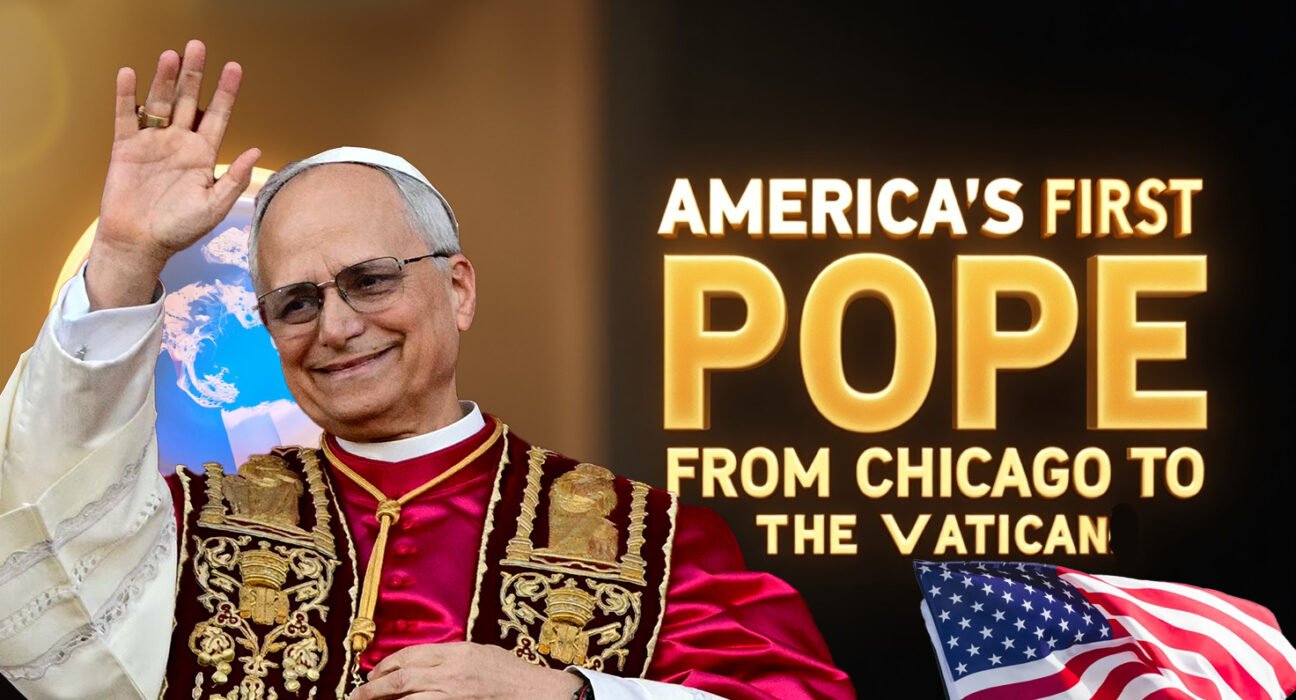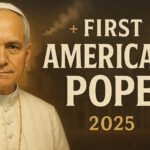Pope Leo XIV: America’s First Pontiff – A Historic Journey from Chicago to the Vatican

Pope Leo XIV: America’s First Pontiff – A Historic Journey from Chicago to the Vatican
On May 8, 2025, white smoke billowed from the Sistine Chapel chimney, and the world heard the momentous announcement: “Habemus Papam!” For the first time in the Catholic Church’s 2,000-year history, an American cardinal had been elected Pope. Robert Francis Prevost, taking the name Leo XIV, became the 267th Successor of St. Peter and the first pontiff born in the United States. This watershed moment not only marks a significant shift in Church leadership but also represents a point of immense pride for American Catholics who now see one of their own leading the world’s 1.4 billion faithful. His election bridges the old and new worlds in unprecedented ways, bringing American pragmatism and global experience to the Chair of Peter while maintaining deep connections to the Global South through his decades of missionary work in Peru.
From Chicago Roots to Global Leadership
Robert Francis Prevost was born on September 14, 1955, at Mercy Hospital in the Bronzeville neighborhood of Chicago, Illinois. He was the youngest of three sons born to Louis Marius Prevost and Mildred Martínez Prevost, a family with rich multicultural heritage1119. His father, a United States Navy veteran of World War II who later became superintendent of Brookwood School District 167 in Glenwood, Illinois, was of French and Italian descent. His mother, who worked as a librarian, came from Spanish heritage116. This diverse background would later serve him well in his global ministry and multilingual capabilities.
Growing up in Dolton, a suburb near Chicago, young Robert displayed early signs of both academic excellence and spiritual devotion. He served as an altar boy at St. Mary of the Assumption Church on Chicago’s far South Side, where his vocation likely began to take shape119. His brother John would later recall that Robert aspired to the priesthood from a very young age11.
Prevost’s academic journey was marked by distinction. At St. Augustine Seminary High School, he consistently appeared on the honor roll and took on leadership roles as yearbook editor-in-chief and secretary of the Student Council. His editorial talents were evident early on-the yearbook he edited placed second in the annual critique by Columbia University1119. These formative experiences in Chicago would establish the foundation for his future leadership within the Church.
Education and Early Formation
Following high school graduation in 1973, Prevost pursued higher education at Villanova University in Pennsylvania, where he earned a Bachelor of Science in Mathematics in 1977216. This solid grounding in mathematics reflects his analytical mind-a skill that would serve him well in his future administrative roles. However, his true calling lay in religious service, and in September of that same year, he entered the novitiate of the Order of Saint Augustine (O.S.A.) in Saint Louis, in the Province of Our Lady of Good Counsel of Chicago1.
His commitment to the Augustinian order deepened as he made his first profession on September 2, 1978, followed by his solemn vows on August 29, 19811. Concurrently, he pursued theological studies at the Catholic Theological Union in Chicago, obtaining a Master of Divinity degree210.
Recognizing his intellectual capabilities, his superiors sent him to Rome to study Canon Law at the Pontifical University of Saint Thomas Aquinas (Angelicum), where he was ordained a priest on June 19, 1982, by Archbishop Jean Jadot1. He earned both a licentiate and doctorate in Canon Law, completing his doctoral thesis on “The Role of the Local Prior in the Order of Saint Augustine” in 198714. This specialized knowledge would later prove invaluable in his Church leadership positions.
Mission in Peru: A Transformative Experience
What truly shaped Prevost’s ministry and worldview was his extensive missionary work in Peru. In 1985, while preparing his doctoral thesis, he was sent to the Augustinian mission in Chulucanas, Piura, Peru, serving as chancellor of the Territorial Prelature14. This initial experience in Peru would be the beginning of a deep, decades-long connection with the country and its people.
After a brief return to the United States, where he served as vocation director and missions director of the Augustinian Province in Illinois, Prevost returned to Peru in 19881. Over the next decade, he immersed himself in multiple roles in Trujillo, northwestern Peru, serving as prior of the community, formation director, instructor for professed members, and judicial vicar of the Archdiocese14. He also taught Canon Law, Patristics, and Moral Theology at the Major Seminary “San Carlos y San Marcelo” while simultaneously providing pastoral care to local parishes, particularly in poor suburban areas1.
These years in Peru profoundly influenced his pastoral approach. Living and working among communities on the margins of society gave him firsthand experience of the challenges facing the Global South. He became a beloved figure in Peru, known for his humility and willingness to help others, particularly Venezuelan migrants who had fled economic turmoil in their homeland13. His dedication to the country led him to become a naturalized Peruvian citizen in 2015, giving him dual nationality913.
Leadership in the Augustinian Order
In 1999, Prevost’s leadership abilities were recognized when he was elected Provincial Prior of the Augustinian Province of “Mother of Good Counsel” in Chicago1. This role marked the beginning of his ascent in Church leadership. Just two and a half years later, in 2001, the General Chapter of the Order of Saint Augustine elected him as Prior General-the worldwide head of the Augustinian order14.
As Prior General, a position he held for two consecutive six-year terms until 2013, Prevost demonstrated his administrative capabilities on a global scale. The Augustinian order, comprising around 2,700 priests and brothers operating in 50 countries, emphasizes community life and equality among its members-values that Prevost embodied and promoted13. His leadership required extensive travel to Augustinian communities worldwide, giving him valuable international exposure and experience.
During this period, however, Prevost also faced challenges related to the Church’s ongoing clergy abuse crisis. In 2000, while serving as provincial prior, he permitted a priest who had been accused of sexually abusing minors to live in a Chicago rectory half a block from a Catholic school, at the archdiocese’s request4. The priest was relocated in 2002 following the implementation of stricter rules by U.S. bishops11. This episode highlights the complex leadership decisions he faced during a difficult period for the Church.
Episcopal Career: From Chicago to Chiclayo
After completing his tenure as Prior General, Prevost returned to the United States in 2013, serving as director of formation at the Convent of St. Augustine in Chicago. However, Pope Francis soon had other plans for him. On November 3, 2014, Francis appointed Prevost as Apostolic Administrator of the Diocese of Chiclayo, Peru, elevating him to the episcopal dignity as Titular Bishop of Sufar111.
Prevost was ordained bishop on December 12, 2014-the Feast of Our Lady of Guadalupe-in the Cathedral of Saint Mary. His episcopal motto, “In Illo uno unum” (“In the one Christ we are one”), reflected his vision of unity within diversity, words pronounced by Saint Augustine in a sermon on Psalm 1271.
On September 26, 2015, he was appointed Bishop of Chiclayo by Pope Francis, a role he would hold until 20231. As bishop, he continued his commitment to serving the marginalized and became an active voice in the Peruvian Episcopal Conference, where he was elected second vice-president in 20181. He also served on the Economic Council and as president of the Commission for Culture and Education.
His leadership in Peru did not go unnoticed in Rome. Pope Francis appointed him a member of the Congregation for the Clergy in 2019 and a member of the Congregation for Bishops in 20201. Additionally, in April 2020, he was appointed Apostolic Administrator of the Peruvian Diocese of Callao, demonstrating the Pope’s growing trust in his abilities14.
Vatican Service and Elevation to Cardinal
The trajectory of Prevost’s career took a significant turn on January 30, 2023, when Pope Francis called him to Rome as Prefect of the Dicastery for Bishops and President of the Pontifical Commission for Latin America, promoting him to the rank of Archbishop1. This powerful position made him responsible for evaluating and recommending episcopal candidates worldwide-a critical role in shaping the future leadership of the Church11.
Prevost’s approach to this high-level Vatican position reflected his character. He remained characteristically discreet in the media but was reportedly appreciated for his ability to listen and his mastery of issues2. His attitude was shaped by the vow of obedience he made when committing himself to the Augustinian order. When Pope Francis mentioned he was considering him for the dicastery position, Prevost responded: “Whether you decide to appoint me or to leave me where I am, I will be happy; but if you ask me to take on a new role in the Church, I will accept”4.
Pope Francis created him Cardinal in the Consistory of September 30, 2023, assigning him the Diaconate of Saint Monica1. He officially took possession of it on January 28, 2024. On February 6, 2025, Francis further promoted him to the Order of Bishops, granting him the title of the Suburbicarian Church of Albano1. These appointments reflected his growing influence within the Church hierarchy and placed him in a position to potentially succeed Francis.
The Historic Conclave of May 2025
Following the death of Pope Francis on April 21, 2025, at the age of 88, a conclave consisting of 133 cardinals convened in secrecy in Rome to select a new pope315. Beginning on May 7, the cardinals gathered in the Sistine Chapel to undertake their solemn duty of electing the 267th leader of the Catholic Church.
The conclave was relatively brief, lasting just over 24 hours20. After an inconclusive first ballot on Wednesday evening, the cardinals continued voting on Thursday. White smoke billowed from the Sistine Chapel chimney around 6 p.m. local time on May 8, accompanied by the ringing of bells from St. Peter’s Basilica, indicating that a new pope had been elected318.
Cardinal Robert Francis Prevost had secured the necessary two-thirds majority-at least 89 votes-to become the next Supreme Pontiff320. Taking the name Leo XIV (the first pope named Leo since Leo XIII, who died in 1903), he made history as the first American to ascend to the papacy311.
First Days as Pope Leo XIV
More than an hour after the white smoke signaled his election, the newly elected pope appeared on the balcony of St. Peter’s Basilica, dressed in papal garments, to address the gathered faithful3. In a departure from what many might have expected, he did not speak in English but instead addressed the crowd in Italian, Spanish, and Latin107.
Opening with the words “Peace be with you all,” Leo XIV expressed his desire for his message of peace to reach hearts, families, and all people wherever they might be57. During his approximately 10-minute address, he paid tribute to his predecessor, Pope Francis, saying, “We still hear that gentle yet steadfast voice of Pope Francis blessing Rome… The Pope who blessed Rome extended his blessing to the entire world that Easter Sunday morning”7.
He articulated his vision for the Church, stating, “We must embody a synodal church. A church that journeys together. A church that consistently seeks peace, charity, and strives to be close to those in need”7. He concluded by leading a prayer for the “new mission for the entire church for peace across the globe”7.
His first act as pope after his election speech was to announce he would celebrate his first Mass as pontiff the following day, May 9, at 11 a.m. local time in Rome for the College of Cardinals20. This immediate focus on his pastoral duties demonstrated his commitment to his new role.
An American Pope: Pride and Significance
The election of Robert Francis Prevost as the first American pope sparked a wave of enthusiasm and pride among Catholics throughout the United States6. Moises Rodrigues, a city council member from Brockton, Massachusetts, expressed the sentiment of many American Catholics when he said: “I’m overjoyed. Just think, for the first time ever, we have an American pope-someone who comprehends American challenges. Plus, he shares a friendship with Pope Francis. I’m in a state of bliss”6.
The historical significance of this moment cannot be overstated. Leo XIV is not only the first pope from the United States but also the first from an English-speaking country since Adrian IV in the 12th century11. He is also the first Augustinian pope and the seventh from orders following the Rule of St. Augustine11.
For American Catholics, who make up about 23% of the U.S. population, having one of their own as the leader of the global Church represents a profound shift. It brings the papacy closer to home and offers a pontiff who understands American cultural contexts while maintaining a global perspective through his extensive international experience.
William Miles, a political science professor at Northeastern University in Boston, suggested that the selection of an American pope could be seen as a “theo-political” response to social policies in the U.S. that Pope Francis had found troubling. “Given the political climate in this country, choosing an American indicates that America is not solely represented by the MAGA president,” Miles explained. “It’s a sign that there are concerns about the moral and spiritual trajectory of the U.S.”6
A Bridge Between North and South
What makes Leo XIV’s papacy particularly meaningful is that while he is American by birth, his heart and much of his ministry have been devoted to the Global South, particularly Peru. This dual heritage positions him as a bridge between the wealthy North and the developing South, between traditional Catholicism and emerging expressions of faith.
His extensive missionary experience in Peru, where he spent nearly two decades and became a naturalized citizen, gives him firsthand understanding of the challenges facing the Church in developing nations. At the same time, his American roots connect him to one of the most influential countries in the world.
Leo XIV’s multilingual abilities further emphasize his role as a bridge-builder. Fluent in English, Spanish, Italian, French, and Portuguese, with reading knowledge of Latin and German, he is well-equipped to communicate directly with Catholics across diverse linguistic and cultural backgrounds1011. This linguistic versatility was evident in his first papal address, where he seamlessly moved between languages.
The Vision of Pope Leo XIV
While it is still early in his papacy, Pope Leo XIV has already given indications of his priorities and approach. His choice of the name Leo connects him to a lineage of popes who navigated periods of significant social and political change. Leo XIII, for example, was known for his social teachings, particularly his encyclical Rerum Novarum addressing the conditions of the working class.
In his first address, Leo XIV emphasized themes of peace, dialogue, missionary outreach, and closeness to those in need57. He also spoke of a “synodal church”-a church that journeys together-echoing one of the key emphases of Pope Francis’s papacy7.
His views on social issues, particularly immigration, align closely with those of his predecessor. In February 2025, he was critical of the Trump administration’s immigration policies, emphasizing the dignity of all people regardless of their origin13. “There must be a way to resolve the issue while also treating individuals with dignity,” he stated. “Each of us-whether born in the United States or at the North Pole-has been gifted with being created in the image and likeness of God. The moment we forget this is the moment we lose sight of who we are and who Christ has called us to be”13.
In a 2023 interview, Prevost highlighted the importance of evangelization for the Church’s growth, saying, “We often focus on imparting doctrine… but we risk neglecting our primary duty to teach what it means to follow Jesus Christ”13. He also emphasized inclusivity, stating, “Our mission is to broaden the tent and ensure everyone knows they are welcome within the Church”13.
Looking to the Future
As Pope Leo XIV begins his papacy, he faces numerous challenges, from addressing the ongoing clergy abuse crisis to navigating geopolitical tensions and addressing climate change. His leadership style, characterized by thoughtful diplomacy and a willingness to listen, may serve him well in these complex arenas.
For American Catholics, his papacy offers a unique opportunity to see their faith tradition represented at the highest level. As John Prevost, the Pope’s brother, expressed after the election: “It’s too unreal. I haven’t had time to think about it yet. It’s a tremendous, tremendous thing to take in, but it’s something to be very proud of”20.
This sense of pride extends beyond the Pope’s immediate family to all American Catholics who can now claim a special connection to the papacy. At the same time, Leo XIV’s deep ties to Peru and his global perspective ensure that his leadership will not be narrowly American but will encompass the universal Church in all its diversity.
In the words of Jesus Leon Angeles, coordinator of a Catholic organization in Chiclayo who has known Prevost since 2018, the new pope “is someone who enjoys helping”13. This simple description perhaps best captures the essence of Pope Leo XIV: a humble servant-leader whose journey from Chicago to the Vatican represents not just American pride but the universal call to service that lies at the heart of the Christian message.
As the Catholic Church enters this new chapter under the leadership of its first American pope, believers and observers alike will watch with interest to see how Pope Leo XIV shapes the future of one of the world’s oldest and most influential institutions. For now, Americans can take special pride in knowing that one of their own has ascended to the Chair of Peter, bringing American pragmatism, multicultural sensitivity, and global vision to the leadership of the Catholic Church.







